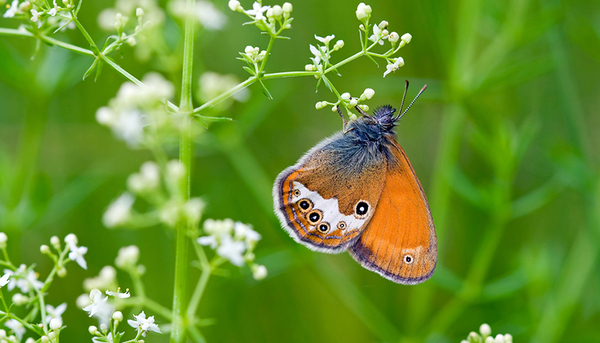Archive detail
Invasive neophytes threaten butterflies in Switzerland
September 8, 2017 |
Imported plants, which proliferate widely along bodies of water, for example, are a threat to biodiversity. Based on data from biodiversity monitoring, the WSL, Eawag and the Helmholz Centre for Environmental Research in Halle investigated what influence 31 invasive neophytes have on butterflies in Switzerland. The result: the local diversity of butterflies decreases with the increase in invasive neophyte species. Not one butterfly species appears to profit from the non-native plants; to a much great extent, about a quarter of the butterfly species are affected negatively by the neophytes.
Impacted above all are the least mobile butterfly species. The reason could be that their caterpillars can reach food plants less easily when these are displaced by invasive neophytes. The close relatedness of the especially heavily-affected species shows also that certain related groups of butterflies react especially sensitively to invasive neophytes. These neophytes can thus reduce the phylogenetic diversity of butterfly colonies. The regions of the especially-sensitive species are also more strongly affected. These are above all the mountainous regions of Switzerland (Jura, southern Switzerland, the Alps). In addition, the presence of invasive neophytes appears to have an influence on butterflies in rather cool areas near forests, in environments with few wetlands and in areas with a great many days of frost per year. These are all regions with rather unfavourable requirements for butterflies to begin with, and now the invasive neophytes reduce even further the availability of resources. (Text source: Information Service Biodiversity Switzerland IBS)
Original article
Gallien L. et al. (2017): Invasive plants threaten the least mobile butterflies in Switzerland. Diversity and Distributions 23(2), 185-195. https://doi.org/10.1111/ddi.12513

